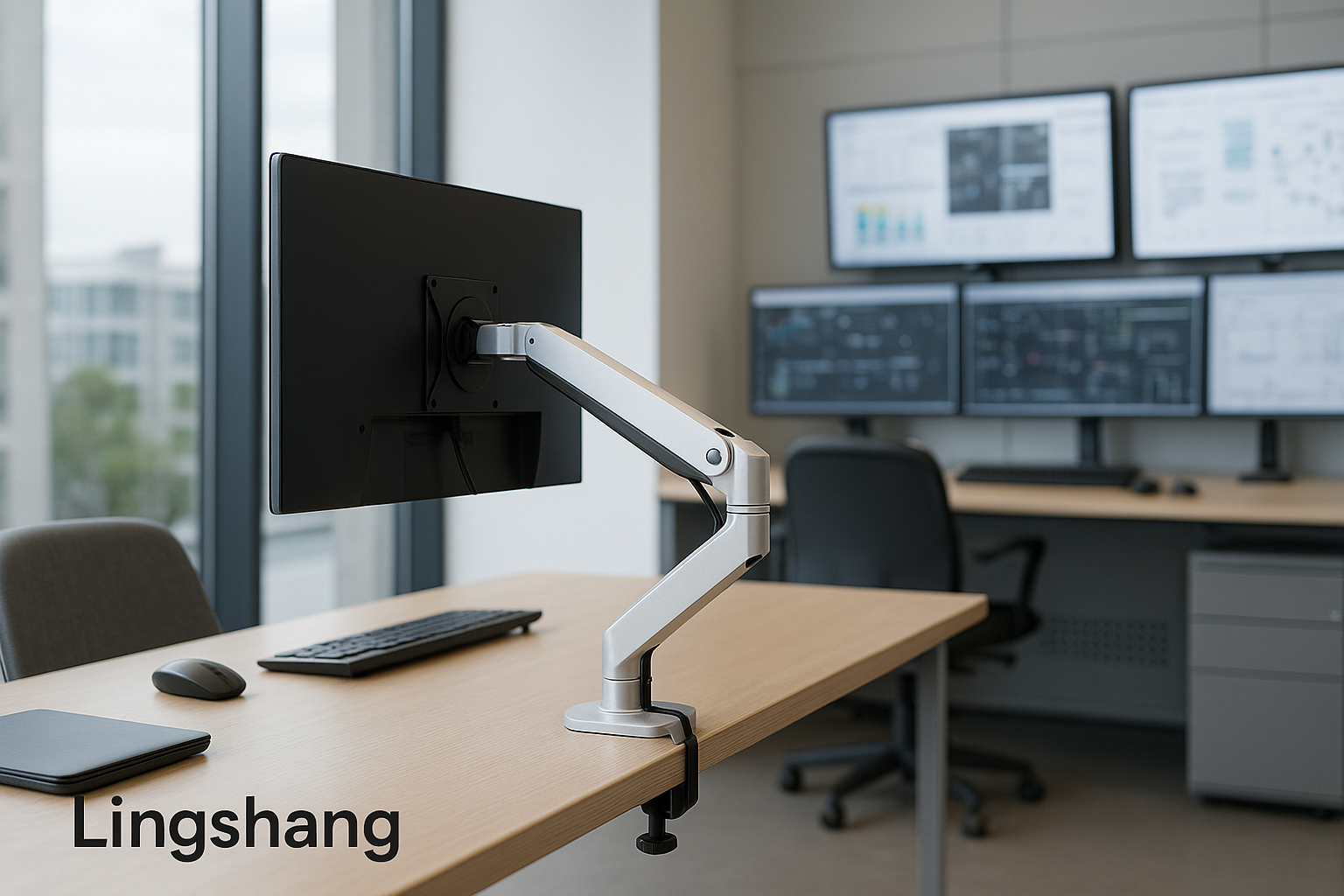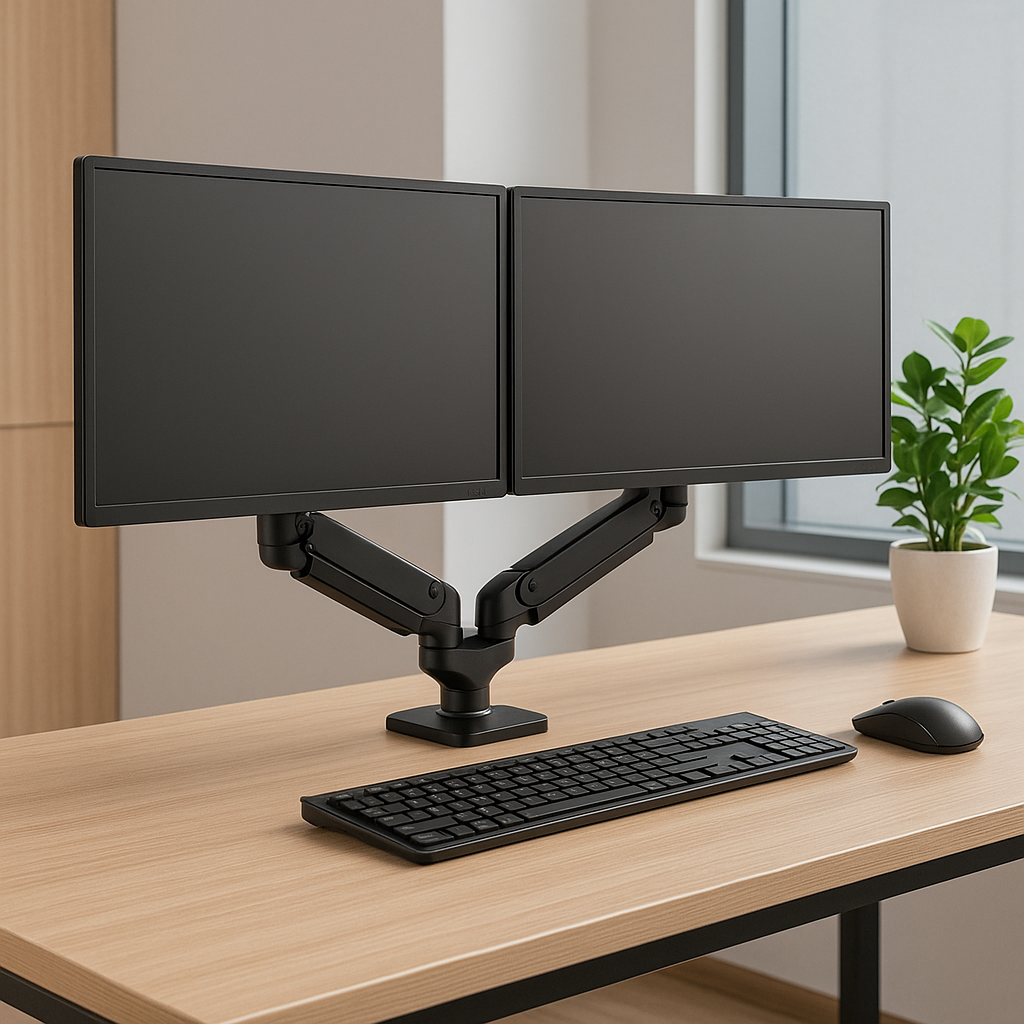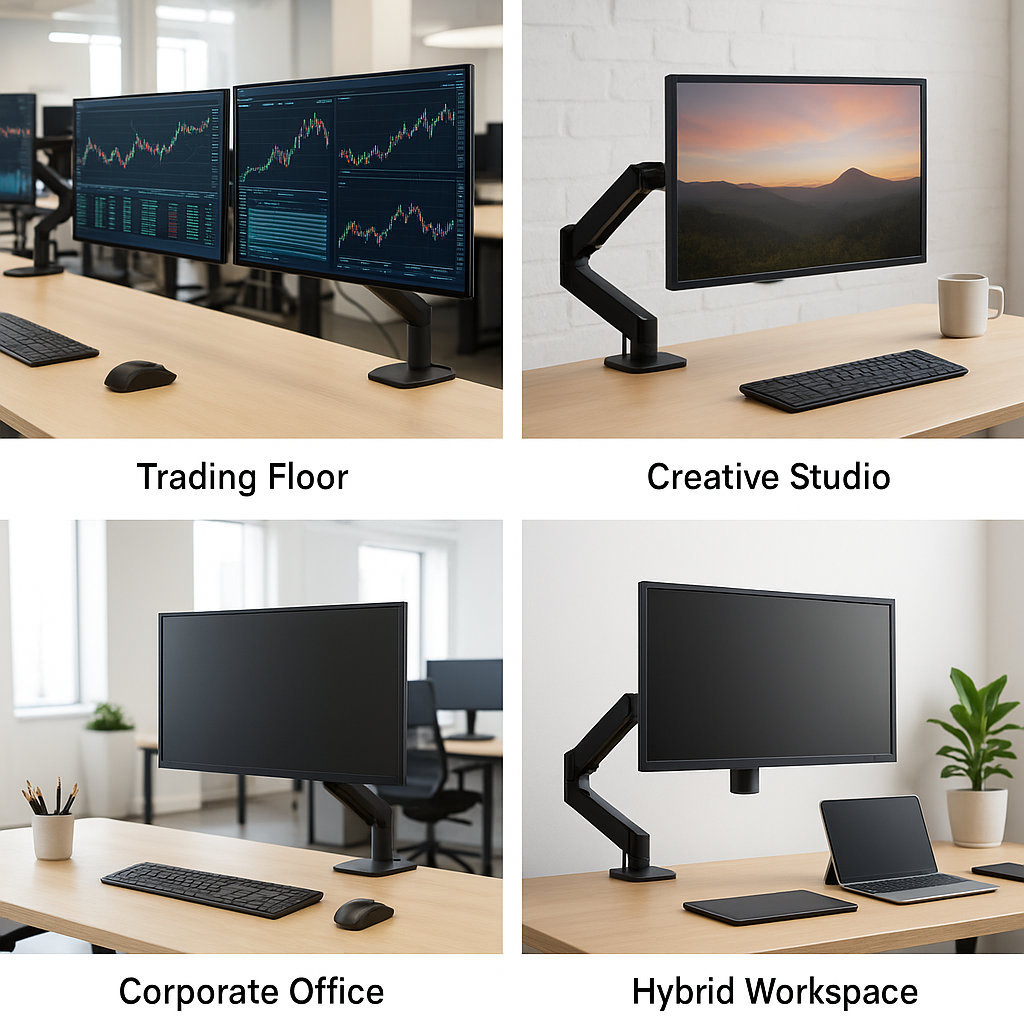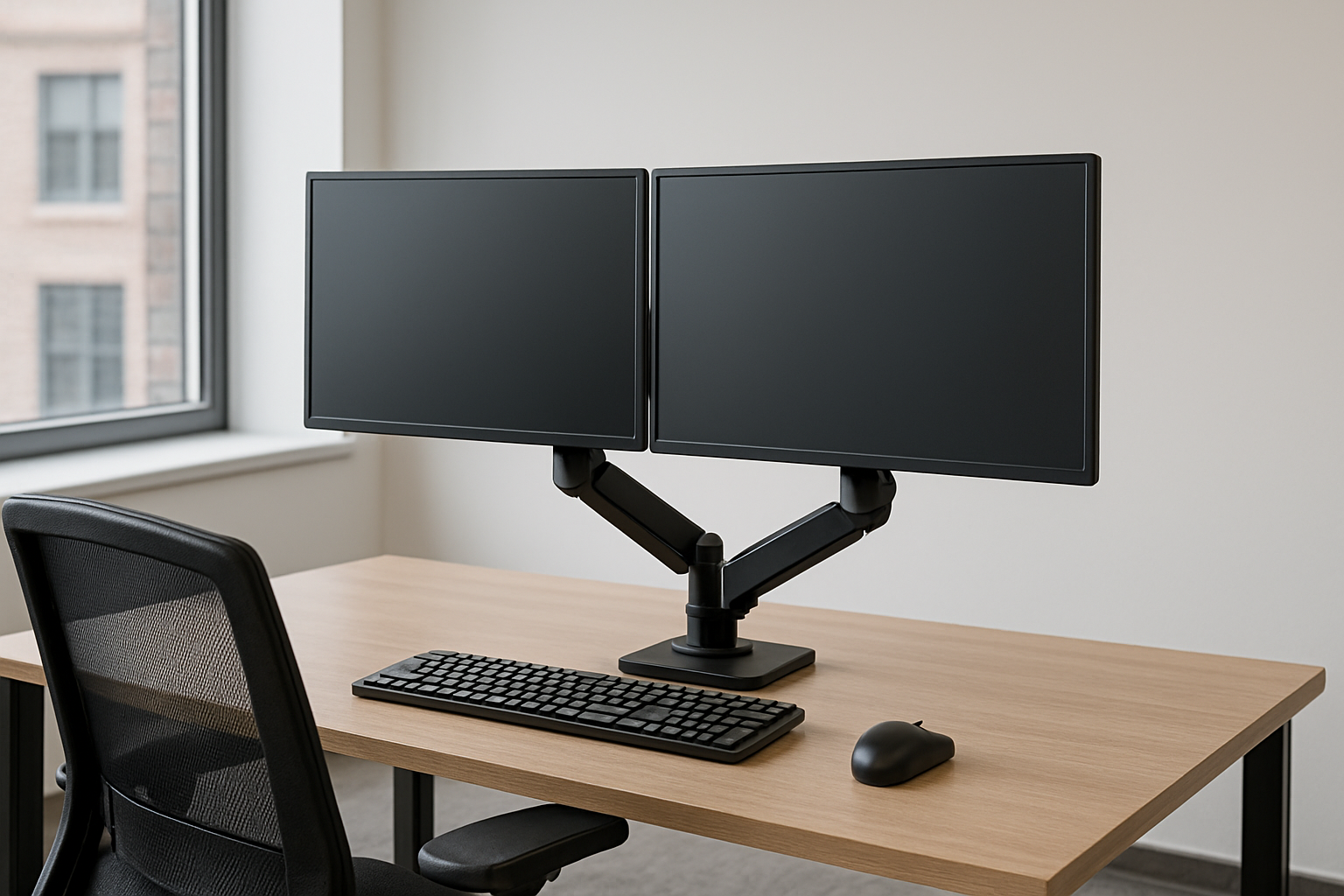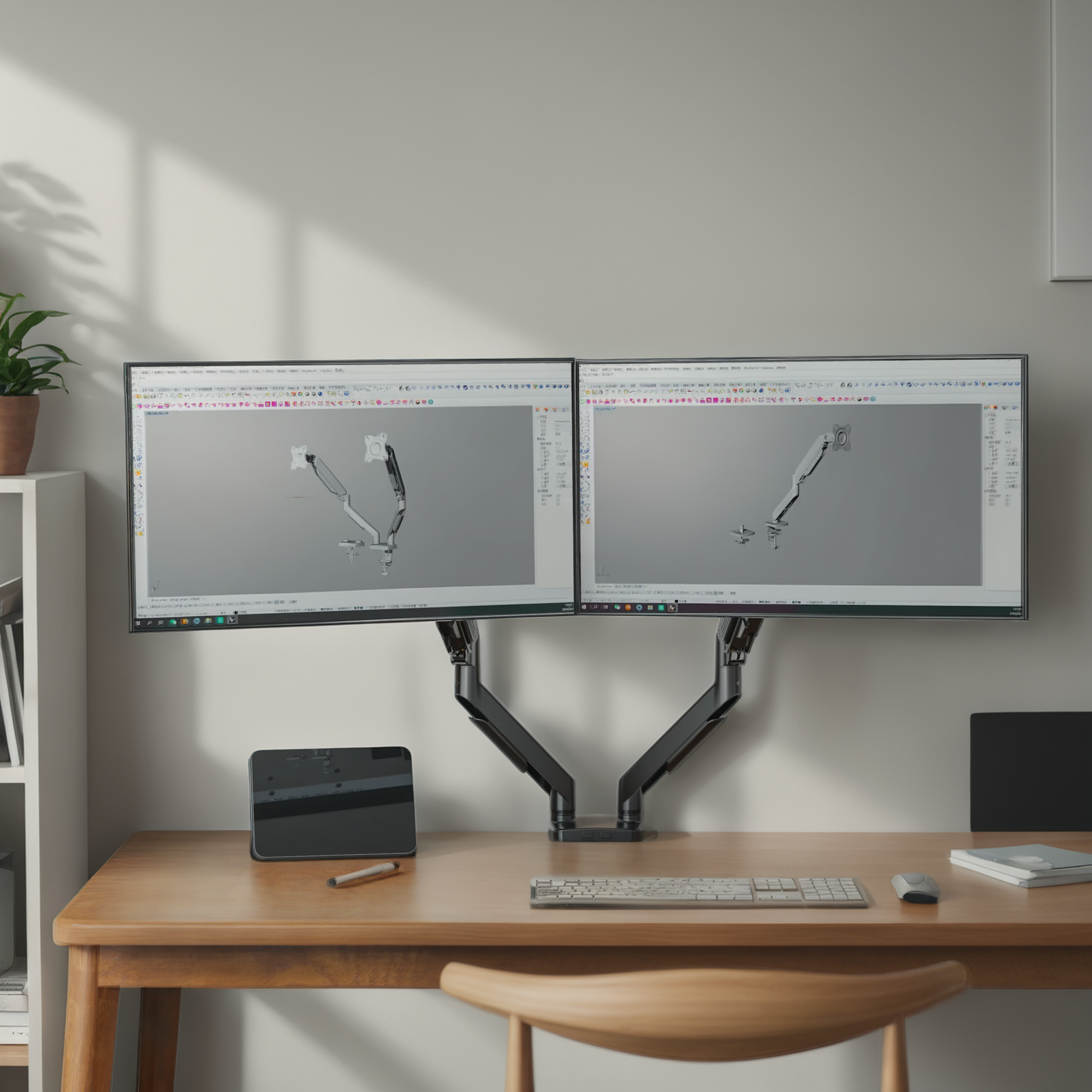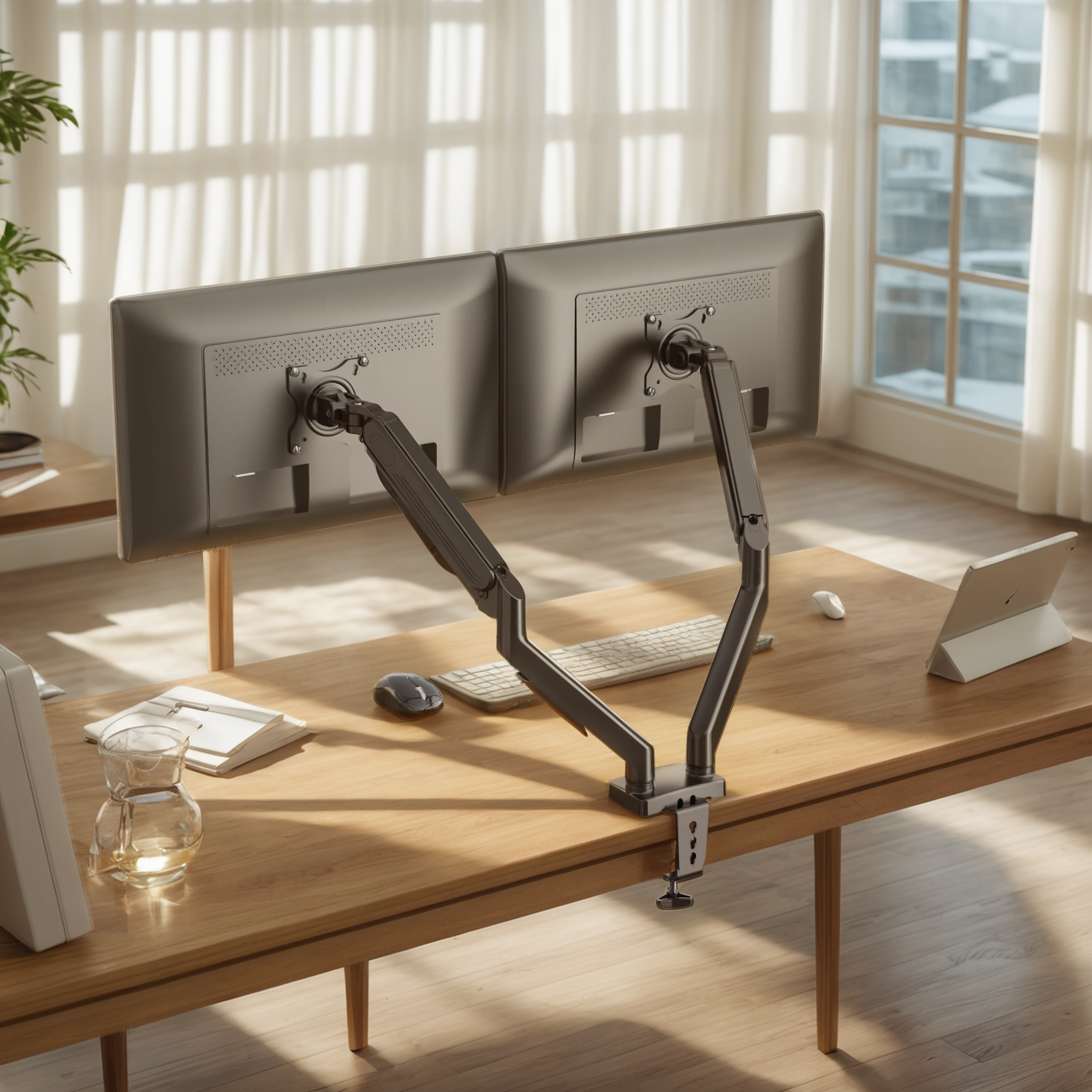
The Best Ergonomic Setup for Video Editors and Content Creators
Content creators don’t just sit at desks—they live in front of screens for hours on end, moving between video timelines, visual assets, and text overlays. And yet, many creators still work withnon-adjustable monitors and cluttered layouts, unknowingly sacrificing theirposture, productivity, and health.
If you’re a video editor, graphic designer, or content producer, an ergonomic desk setup isn’t just a luxury—it’s a necessity.
Common Pain Points for Creators
Long hours, rigid screens
Most editing projects demand6–10 hours/dayof focus. Using factory monitor stands locks your screen into a fixed position, forcing your neck and spine into awkward angles.
Multi-app, multi-screen workflow
Creators frequently toggle between atimeline view, asset folders, and preview monitors—often spread across dual or triple screens. Misaligned displays slow reaction time and cause eye strain.
Tight desk space
Whether you’re in a home studio or co-working hub,desk space is usually limited—clutter builds fast without cable routing or screen elevation.
A study published in theJournal of Digital Workspaces found thatcontent creators using adjustable monitor arms reported a 29% reduction in eye fatigue and a 21% increase in editing speedover a four-week period.
Real-World Scenario: An Editor’s Workflow Reimagined
Sophie, a freelance video editor based in Vancouver, used to rely on her laptop screen and a second monitor propped up by books. Over time, she began experiencingneck tightness, eye strain, and trouble aligning color grading toolsacross screens.
After switching to adual monitor mount from lingshang, Sophie was able to:
-
Align both screens at eye level
-
Swivel her preview monitor for client reviews
-
Free up space for her drawing tablet and audio mixer
-
Cut editing time by ~15% through better visual flow
What an Ideal Setup Looks Like
Here’s how to structure a creator-focused ergonomic workstation:
1. Dual or stacked monitor arms
For colorists, editors, or designers juggling timelines and previews,independently adjustable armsensure each screen is perfectly placed—reducing neck motion and improving focus.
2. Screen distance and tilt
Your main screen should sit20–30 inches from your eyes, slightly below horizontal eye level. A 10–20° tilt reduces glare and minimizes head movement.
3. Desk-mounted arms
Clamp-mounted arms keep desk surfaces clean andallow dynamic angle adjustmentswhile using a drawing pad or reviewing footage.
4. Cable routing & modular builds
Built-in cable management simplifies your setup and supportsclean aesthetics, especially for those filming or streaming on camera.
Tip: For vertical screen use (like script reference or chat monitoring), opt for a gas-spring mount with 360° rotation support.
Tools That Make a Difference
Monitor mounts from lingshangare designed with creators in mind:
-
Smooth vertical & horizontal adjustment
-
VESA support for popular editing monitors
-
Reinforced load capacity for ultrawide or color-accurate displays
-
Compact installation that fits studio or home environments
Whether you're streaming, editing, or designing thumbnails—your monitor position influences your workflow speed and your physical comfort.
Create Without Compromise
You put care into your content—why not bring that same intention to your workspace? An ergonomic monitor setup tailored to your creative needs helps you edit faster, stay focused longer, and work in greater comfort.
Explore our full line of adjustable monitor mounts on thehomepage.
Need help finding the right setup? Visit ourContact Us pageto speak with our team—we’re here to support your creative process.

